Brand resonance model: Reaching the pinnacle of customer relations
| August 19, 2020

Brand resonance is a crucial concept in marketing that signifies the depth of the psychological bond between a brand and its customers. It reflects the ultimate level of connection, where customers feel a strong attachment and loyalty to the brand. Achieving this level means the brand has successfully developed its identity and has become a reference point in the marketplace, signifying that it has achieved brand resonance.
Brand resonance is like the very top of a skyscraper – a towering building high in the sky. You can’t expect to reach it by jumping or climbing up a small ladder.
Instead, it takes incremental steps, generally beginning with entering a building then working your way up many flights of stairs. Only then can you reach the top of a skyscraper.

Achieving brand resonance without some legwork is like jumping as high as you can into the air hoping to reach the top of the skyscraper.
Luckily, just like with climbing a tall building, there are some well-known steps listed in a model to reach resonance.
In this article, I’ll provide you with these steps, making it clear and simple to achieve brand resonance.
What is brand resonance?
Brand resonance is how well a customer relates to a branded element, such as a retail product. It is how someone perceives a brand and their values or goals. Brand resonance models, such as the Brand Resonance Pyramid, are used to help build relationships with customers.
Now that you know what brand resonance is, it’s time to learn how to achieve it. This is where we introduce the Keller Model.
The Keller Model is widely observed, and lists the following steps on its pyramid structure:
- Salience
- Performance
- Imagery
- Judgments
- Feelings
- Resonance
I will break each one down in detail, but for now just understand that each offer guidance into what goes into each branding stage in order to reach resonance.
What is the purpose of a brand resonance model?
It has been said that 80% of what people learn is visual.” – Allen Klein.
A brand resonance model details each necessary branding step required in order to reach resonance.
It offers a way for branding planning to take an illustrative effect, giving visual directions to reach important goals.
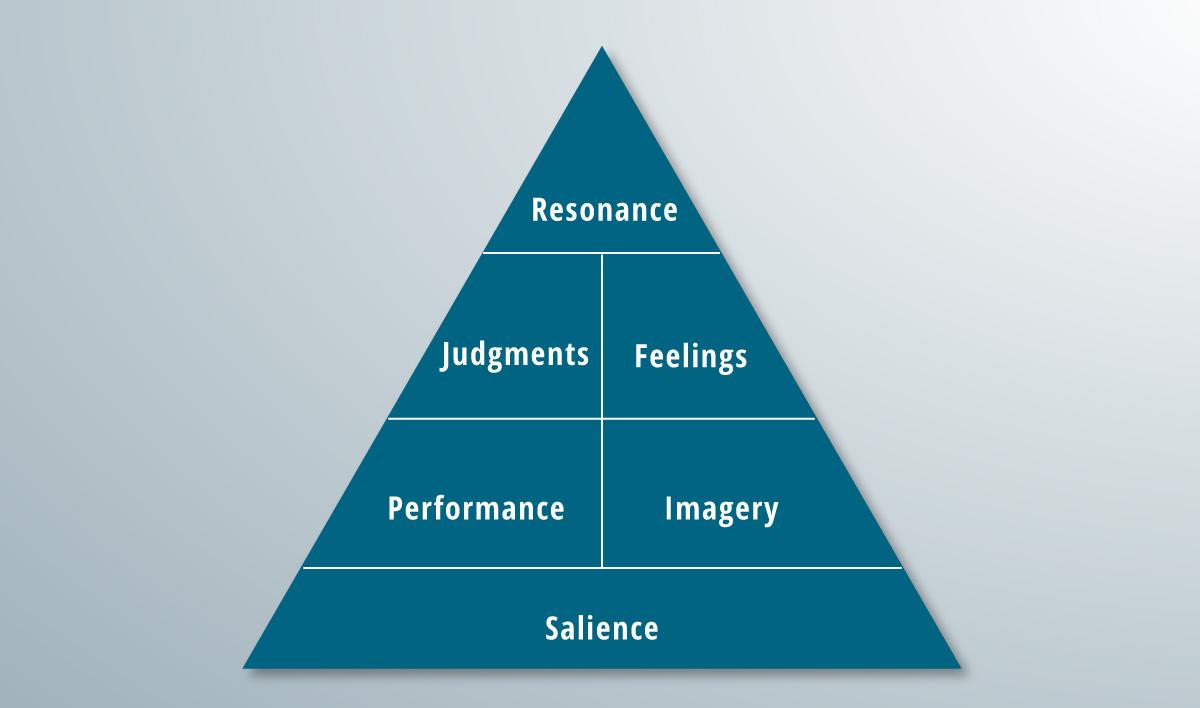
Unlike a linear model, which might suit other goals, a pyramid is best for brand resonance, as the quest isn’t linear and involves steps that involve different development procedures.
By having a visual structure, a brand can aim to achieve different branding objectives for their own unique products and services. I will provide a detailed example a bit later, but first I’ll break down each quadrant of the resonance pyramid.
The brand resonance model explained in detail
Understanding a brand resonance model is simple. In fact, you probably already know a lot about some of the steps.
Brand building within the framework of the Brand Resonance Model is crucial as it highlights the sequential steps essential for creating strong emotional connections with consumers.
There are four levels and six quadrants. The four levels essentially define a brand using these questions (from bottom – 1st rung of pyramid – to top):
- Who are you? (Identity)
- What are you? (Meaning)
- What about you? (Response)
- What about you and me? (Relationships)
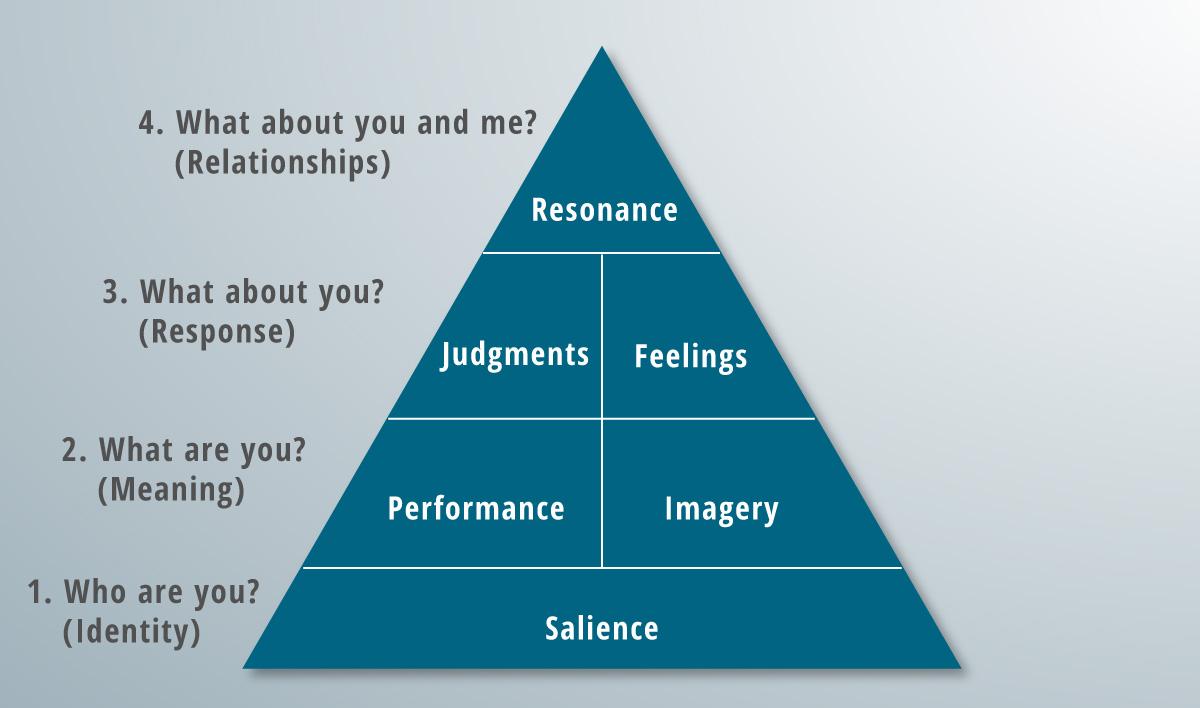
These questions work brands through each stage of development. Tied to these stages is an objective aimed to help complete the task at hand. They are as follows:
- Brand awareness
- Differentiation
- Emotional reactions
- Loyalty
Let’s get started.
There’s no reason to overcomplicate the process – simply move from the bottom of the illustration to the top.
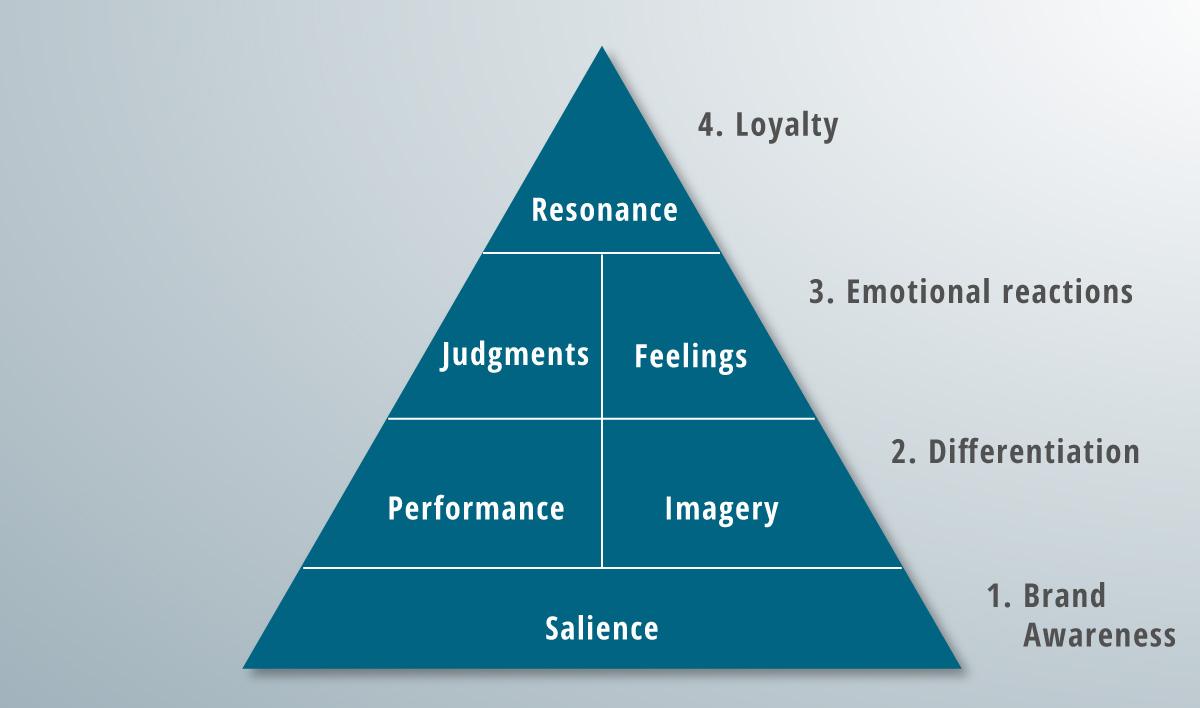
As we mentioned before, the model isn’t linear. However, there is some semblance of order that needs to be followed, beginning with the bottom level, ‘salience’ (noticeable, clear, identifiable).
Salience
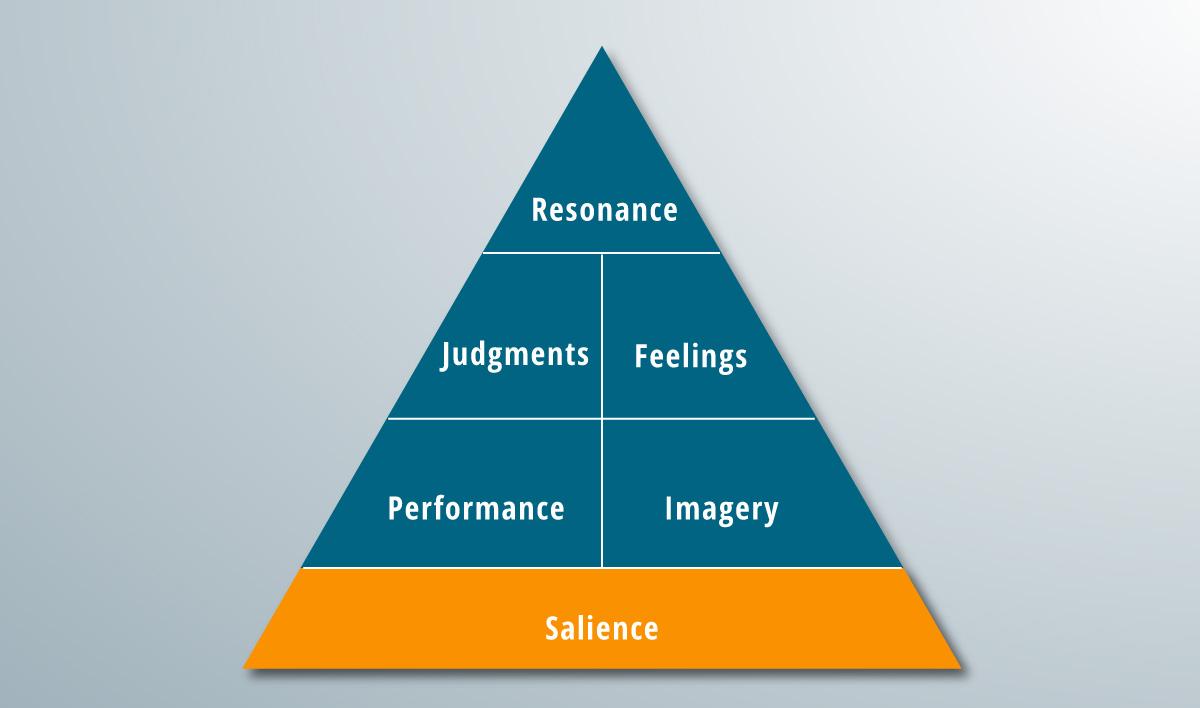
What is it?
As you can see above, ‘salience’ fills up the bottom rung of the pyramid. Salience is simply referring to how transparent a brand is to a customer.
Brand salience deals with how knowledgeable a customer is about a branded product or service.
Similarly, each time a customer decides to make a purchase from a brand, salience is how clearly they can recall different factors such as values, which is crucial for building strong brand equity.
How to achieve it
The main thing to consider when fulfilling this stage of the resonance pyramid is brand awareness.

If you recall, this is the ‘who are you?’ stage of the model, and nothing answers that question better than strong brand awareness.
Brand awareness is, basically, how well a customer is able to identify particular traits of a specific brand, such as their unique qualities.
To increase your brand awareness, and thus answer the ‘who are you’ salience stage of the resonance model:
- Define your brand in detail
- Maintain steady focus on content
- Get creative with communication
The more you build brand awareness, the better you’ll answer the ‘who are you?’ question, which ultimately is the key to reaching salience.
Performance
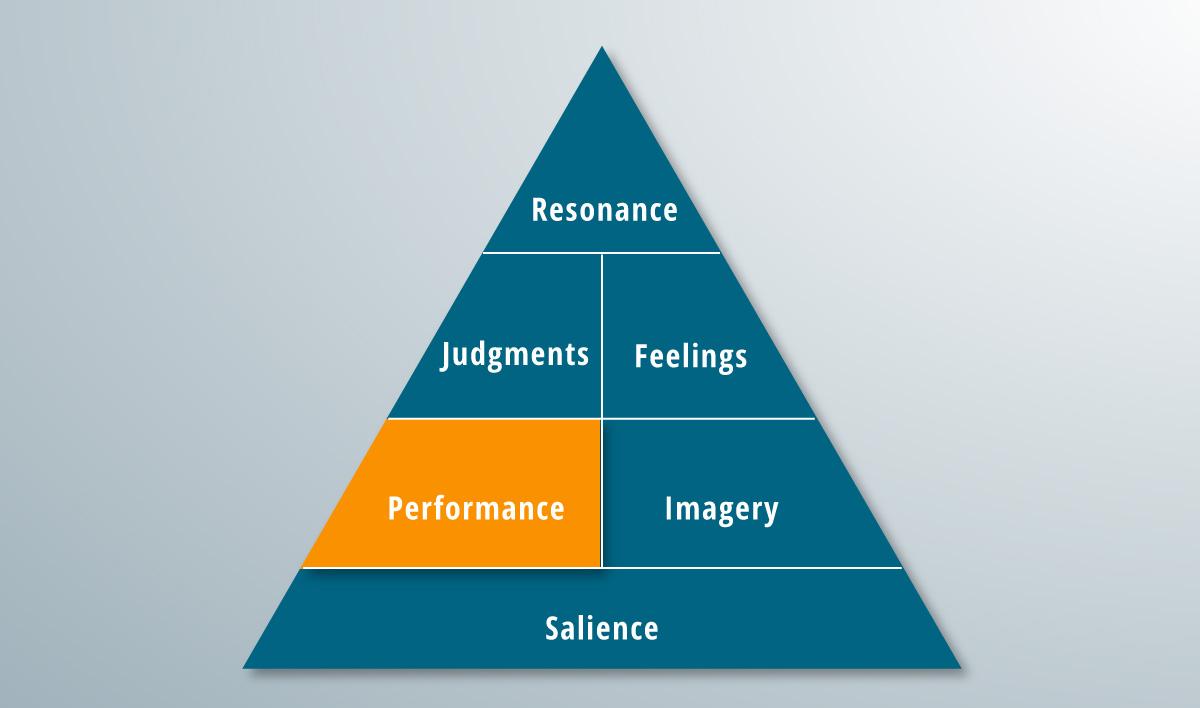
What is it?
The ‘performance’ section is one of the two quadrants on the second rung of the pyramid. On a foundational level, performance in this case refers to how well a brand meets customer needs.
It is a measurement of efficiency, involving the products or services and how well they are helping customers overcome problems.
How to achieve it
The ‘performance’ quadrant is on the second rung of the pyramid, which means it is in the ‘what are you?’ stage of the model.

Focus on performance when possible.
One of the most powerful ways to measure performance and efficiency is through differentiation, which gives us a reference point between a brand and its competitors.
In order to meet the objectives of the ‘performance’ stage, build brand differentiation by doing the following:
- Creating memorable experiences
- Displaying positive brand values
- Telling important brand stories
- Building brand personas
Creating differentiation helps answer the ‘what are you?’ stage, but remember that performance is only one of the quadrants of this stage. The other is imagery.
Imagery
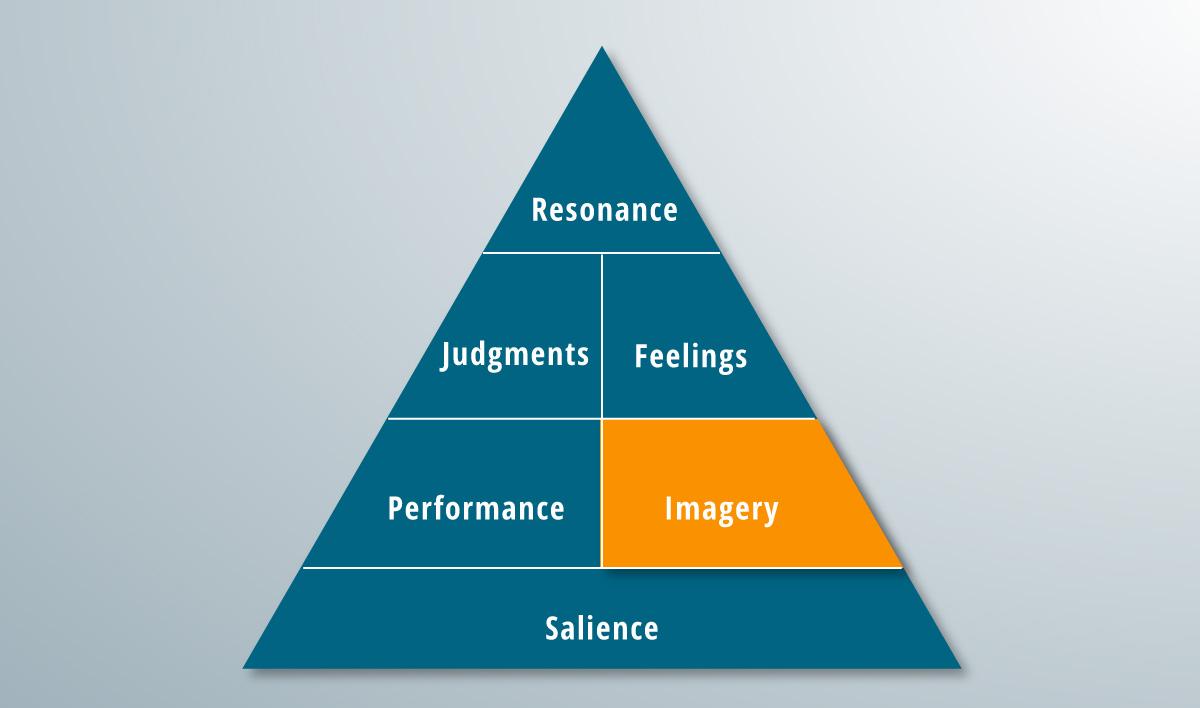
What is it?
Brand imagery is on the second rung of the pyramid, sharing this rung with ‘performance’ and part of the ‘what are you?’ stage.
Imagery, in this model, refers to how the customer perceives a brand.
How to achieve it
Don’t confuse imagery with things like logos and fonts, though these may be a part of it. Instead, consider imagery to be more about customer perception and brand image.
Brand image deals with the types of feelings a customer has about a brand. In order to create a positive brand image, you’ll need to do the following:
- Learn more about your audience
- Use fitting visual elements
- Measure your personas to see if they relay the right message
With a strong brand image, you’ll move on to the next stage, ‘judgments’.
Judgments
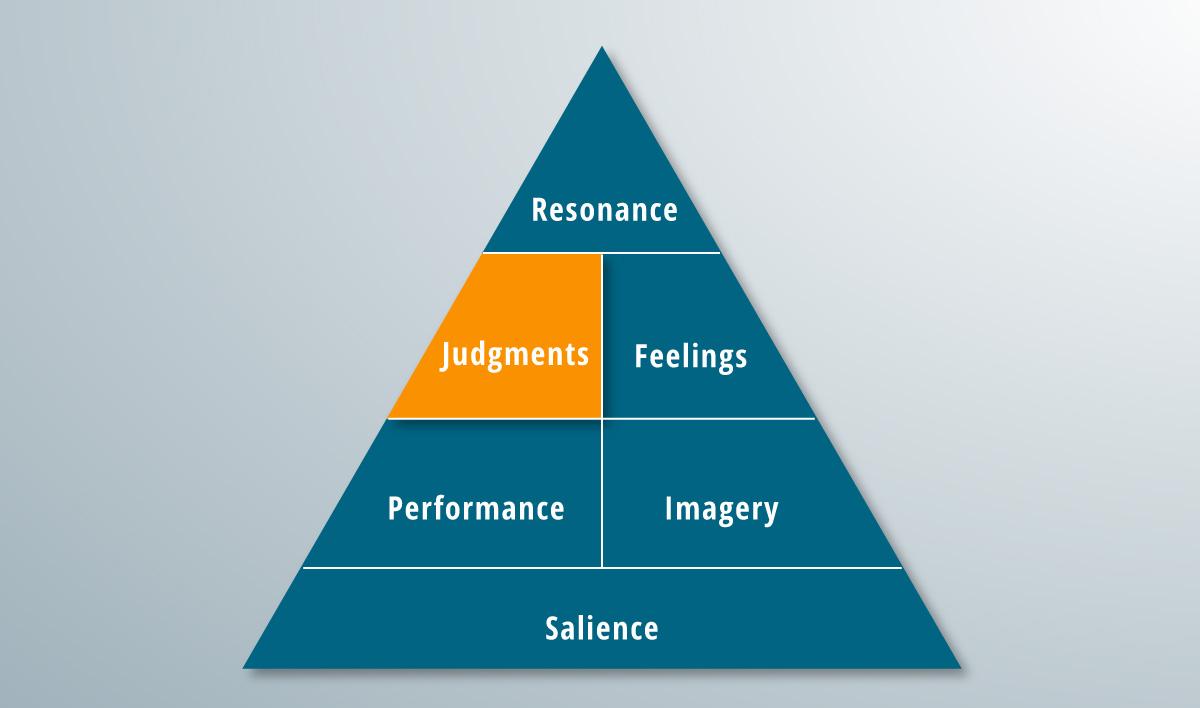
What is it?
‘Judgments’ is on the third rung of the resonance pyramid, which is split between two different quadrants (the other being ‘feelings’).
Judgments in this respect refers to a group of thoughts and decisions a customer makes concerning a brand’s product or service, which significantly shape the brand response.
Judgments refer to how customers feel about a product’s quality and ability to outperform other brand’s products.
How to achieve it
As ‘judgments’ appears on the third rung, it is part of the ‘what about you?’ stage of the resonance model.
In order to influence customers to hold positive judgments about your brand, determine new and unique ways to improve the performance and quality of your products.
The other half of this rung comes from the ‘feelings’ quadrant.
Feelings
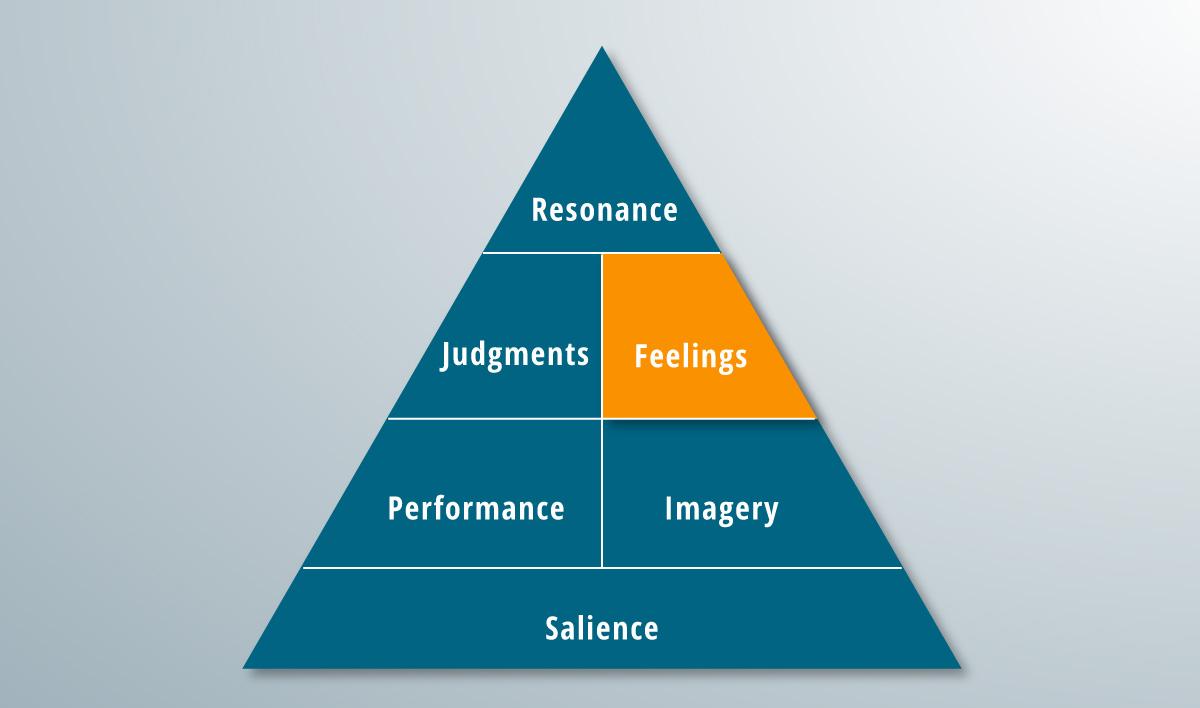
What is it?
‘Brand feelings’ shares the third rung with the ‘judgments’ quadrant, making it a part of the ‘what about you?’ stage of the model.
Feelings, at least in this regard, means the amount of attachment customers have towards a brand.
How to achieve it
There are many ways to fuel customer emotions through your branding, though one method seems to stand out – brand experience
Offering strong brand experiences builds relationships, memories and positive emotions. Here’s how to make sure your brand offers effective experiences:
- Target different human senses
- Personalize the experience
- Create emotional content
After working through the first three rungs, you’ll finally come to the resonance stage.
Resonance
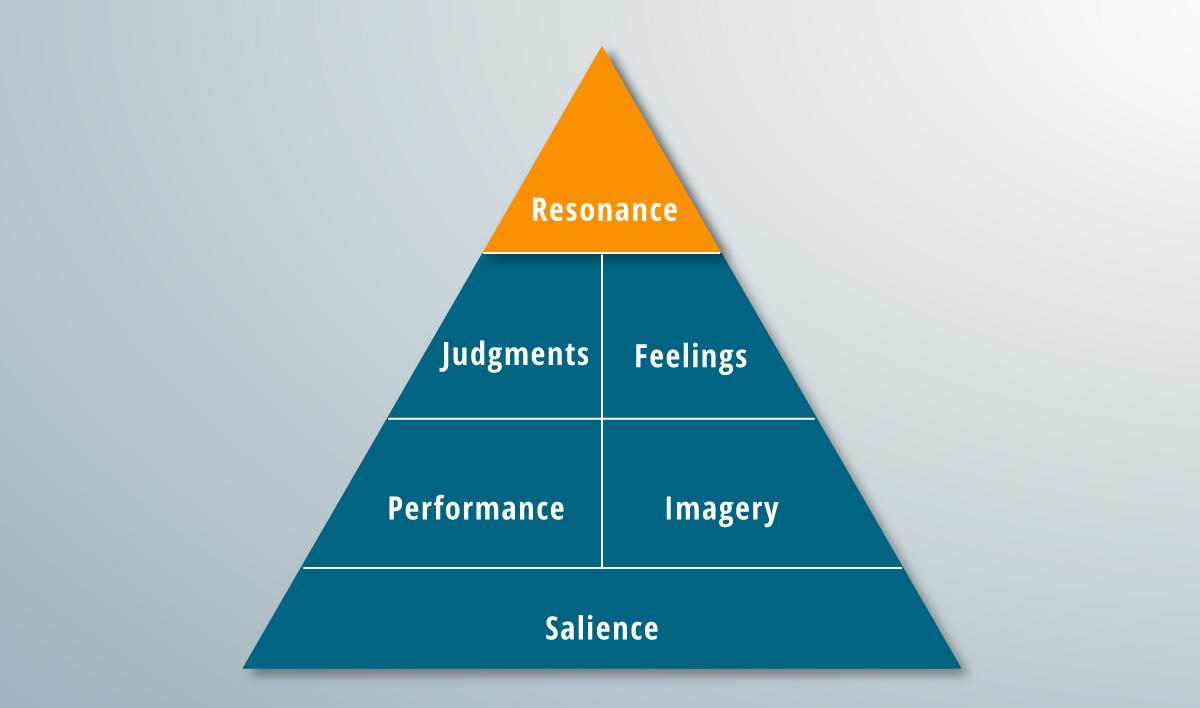
What is it?
The resonance stage is the absolute top of the pyramid. Each quadrant below has built toward this: a solid relationship between brand and customer, emphasizing the importance of strong brand relationships through trust, transparency, and consistent engagement over time.
How to achieve it
As we’ve already shown, working through the bottom stages of the pyramid build toward resonance. In order to maintain it, however, focus on the things that sustain it.
For example, brand loyalty is a common result of reaching brand resonance. In order to maintain customer loyalty, do the following:
- Focus on customer support
- Enhance your customer service
- Offer rewards programs
- Adapt to consumer trends
Brand Identity and Meaning
Understanding Brand Identity
Brand identity is the foundation of a brand’s presence in the market. It encompasses the visual and verbal elements that distinguish a brand from its competitors. A strong brand identity is essential for creating a lasting impression on customers and establishing a unique position in the market. Key elements of brand identity include the brand name, logo, tagline, and visual and verbal brand elements.
A strong brand identity is more than just a logo or a catchy tagline; it’s the essence of what your brand stands for. It’s how your brand communicates its values, mission, and personality to the world. When customers see your brand, they should immediately recognize it and understand what it represents. This recognition and understanding are crucial for building trust and loyalty.
Crafting Meaningful Brand Connections
Crafting meaningful brand connections involves creating a deep understanding of the target audience and developing a brand identity that resonates with them. This requires a thorough analysis of the market, industry trends, and customer needs. By creating a brand identity that is authentic, consistent, and relevant, businesses can establish a strong emotional connection with their customers, leading to increased brand loyalty and customer retention.
To achieve this, start by defining your brand’s core values and mission. What does your brand stand for? What are its goals? Once you have a clear understanding of your brand’s identity, you can begin to craft messages and experiences that resonate with your target audience. Use storytelling to convey your brand’s values and mission in a way that is relatable and engaging. Brand consistency is key – ensure that all brand communications, from marketing materials to customer service interactions, reflect your brand’s identity.
Creating Shared Brand Experiences
Creating shared brand experiences is a powerful way to enhance brand resonance. These experiences foster a sense of community and belonging among customers, making them feel like they are part of something bigger than just a transaction. Shared experiences can take many forms, from interactive events and social media campaigns to personalized customer interactions and loyalty programs.
To create these experiences, start by understanding what your customers value and what motivates them. Use this insight to design experiences that are meaningful and memorable. For example, hosting events that align with your brand’s values and mission can create a strong emotional connection with attendees. Similarly, engaging customers on social media with interactive content and personalized responses can make them feel valued and heard.
By creating shared experiences, you not only strengthen the bond between your brand and your customers but also encourage word-of-mouth marketing and brand advocacy. Customers who feel a strong connection to your brand are more likely to share their positive experiences with others, further enhancing your brand’s reputation and reach.
In conclusion, achieving brand resonance requires a strategic approach to building and maintaining strong brand identity, crafting meaningful connections, and creating shared experiences. By following the steps outlined in the brand resonance model, you can build lasting relationships with your customers and reach the pinnacle of customer relations.
A resonance model helps brands pinpoint their current location, making it clear what they need to do next to move up the ‘rungs’.
Once you become aware of a stage and the branding objectives required, the rest of the process is easy.

